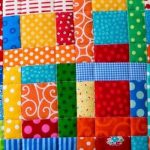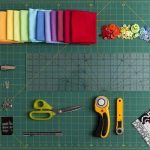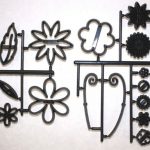Do you know that sewing a quilt by hand offers a soft finish and sophisticated look that can never be achieved if you use a sewing machine?
Needless to say that there is absolutely nothing that can beat the art of sewing a quilt simply with a needle and thread.
Like me, if you are interested in craftworks, I recommend you to try patchwork quilt without any sewing machine.
Today, I will help you to get started so stay tuned!

What You Will Need:
Here are some must-have supplies for mastering the art of hand-quilting.
-
Needles
Remember that the size of the needle can make a major difference. Many hand-quilting experts mention that a size 10 needle is ideal — its eye is neither too big nor too small. Also, the needle is sturdy enough to handle multiple layers of a quilt.
-
Thread
If you are using cotton fabric, you should better use a cotton thread. Before settling with the right thread, you may have to try several types to find out the one which is durable and also quite easy to work with.
Once you finalize the thread, coat it with a thread conditioner. It will help you to avoid knotting while you stitch.
-
Quilting Hoops
There are various types of hoops available in the market, such as handheld hoops, standing quilt hoops, and lap hoops. If you are working on a small project, like quilting a pillowcase, you don’t require a handheld hoop. On the other hand, for a project like a throw, handheld hoops are useful.
Pro Tip: While embroidering, don’t place the quilt in a tight way in the hoop. The fabric should be able to move freely when you work.
How to Hand Quilt
Check out the following pointers:
1. Cut the Thread
Your thread length should be approximately 18 inches — any longer thread may tangle and any shorter thread will require you to switch the threads frequently.
Once you have got the right length of thread, give it a slight tug so that the knot can go through the backside of the fabric, but don’t pull it too much. Otherwise, the knot may get hidden in the quilt and ruin the design.
2. Start Stitching
While quilting, keep your stitches even and small. About six stitches per inch is a good goal. Once you gain more expertise, you may shoot for more stitches, say from 8-12 stitches per inch.
Pro Tip: Place one hand below the quilt and keep another hand above. This will offer you more flexibility and greater control over the quilting process.
3. Load the Stitches
Make your top hand guide the needle to move up and down but make sure not to pull the thread too much. Instead, you can load 2 or 3 stitches on the needle. After that, you should pull the thread completely. Pay attention to maintain the tension even. Keep doing this until you are done sewing a specific piece and then move on to the next piece.
Have you liked the article? Share your thoughts.


